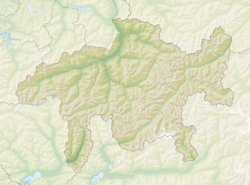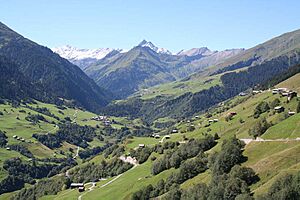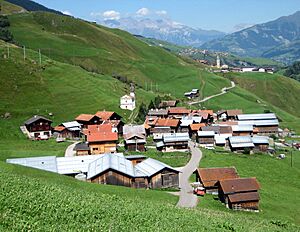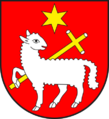Vrin facts for kids
Quick facts for kids
Vrin
|
||
|---|---|---|
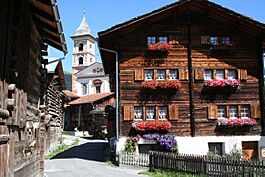 |
||
|
||
| Country | Switzerland | |
| Canton | Graubünden | |
| District | Surselva | |
| Area | ||
| • Total | 71.23 km2 (27.50 sq mi) | |
| Elevation | 1,448 m (4,751 ft) | |
| Population
(Dec 2011)
|
||
| • Total | 255 | |
| • Density | 3.580/km2 (9.272/sq mi) | |
| Postal code |
7149
|
|
| Surrounded by | Blenio (TI), Lumbrein, Medel (Lucmagn), Sumvitg, Vals | |
Vrin is a beautiful village located in the canton of Graubünden in Switzerland. It used to be a separate town, but on January 1, 2013, Vrin joined with several other towns like Cumbel, Degen, Lumbrein, Morissen, Suraua, Vignogn, and Vella. Together, they formed a new, larger municipality called Lumnezia.
Vrin is special because it won the Wakker Prize in 1998. This award is given to places that do a great job of protecting their old and important buildings.
Contents
History of Vrin
Vrin is a very old place! The first time anyone wrote about Vrin was in the year 1208. Back then, it was known as Varin.
Geography of Vrin
Vrin is located in the Upper Lugnez valley. This area is part of the Surselva district. The village is also close to the Diesrut pass and the Greina pass, which are mountain paths.
The area of Vrin is about 71.2 square kilometers (about 27.5 square miles). A big part of this land, almost 40%, is used for farming. About 7% is covered by forests. The rest of the land is made up of buildings, roads, rivers, glaciers, or mountains.
Vrin has a main village called Vrin-dadens. There are also smaller settlements like Vrin-dado, Cons, Ligiazun, and Sogn Giusep. You can also find several old, abandoned settlements in the area, such as Pignola and Puzzatsch.
People of Vrin
In 2011, about 255 people lived in Vrin. Most people in Vrin speak Romansh, which is a very old language spoken in parts of Switzerland. About 95% of the people speak Romansh. German is the second most common language.
The people of Vrin are well-educated. Many adults have finished high school or gone on to higher education at a university.
Wakker Prize for Vrin
Vrin received the Wakker Prize because it found a way to build new farm buildings while still keeping the traditional look of the village. This award celebrates how the village has worked hard for many years to protect its unique style.
During the 1900s, the number of people living in Vrin slowly went down. To help the village grow again, Vrin started a special project in the 1980s and 90s. They worked with the local government and a university (ETH Zürich) to improve the village's buildings and services.
One smart thing the villagers did was to buy all the empty land available for building. This stopped people from buying land just to make prices go up. They also hired a local architect named Gion A. Caminada to make sure new buildings fit in with the old ones.
As part of this project, they added important things like a butcher shop, a cooperative (a group working together), a slaughterhouse, barns, and a multi-purpose hall. Many of these new buildings were made from wood in a traditional style, similar to log cabins.
Important Buildings in Vrin
The Church of S. Maria in Vrin is a very important building in Switzerland. It is listed as a national heritage site.
This church, also known as the Church of the Immaculate Conception (St. Maria) and John the Baptist, was first made a church in 1345. For many years, it was a smaller chapel connected to a bigger church in a nearby town called Vella.
Weather in Vrin
Vrin gets a good amount of rain or snow each year. On average, it has about 121 days with precipitation. The wettest month is usually August, and the month with the most days of rain or snow is July. The driest month is February.
Images for kids
See also
 In Spanish: Vrin para niños
In Spanish: Vrin para niños




